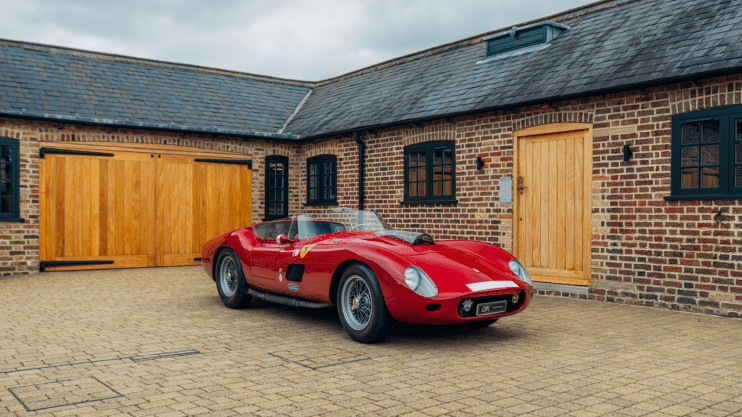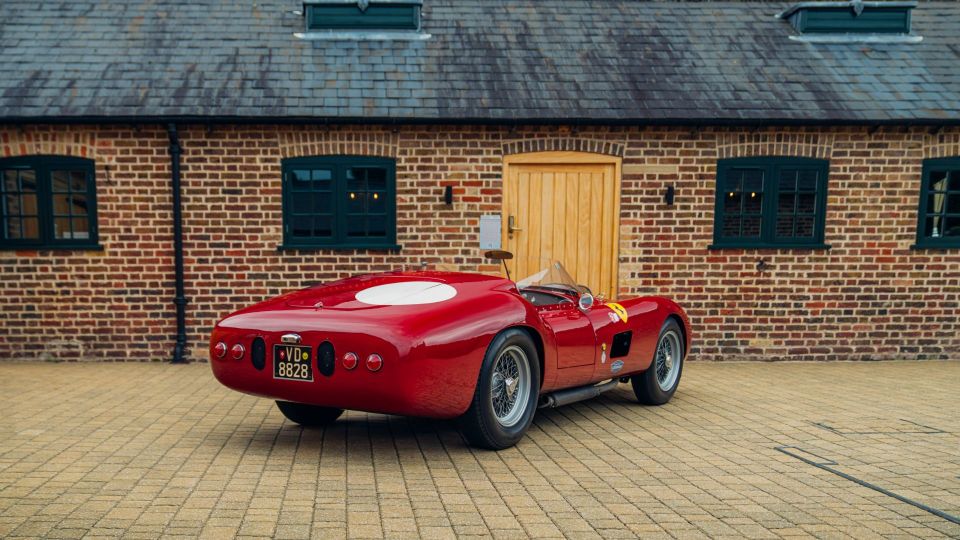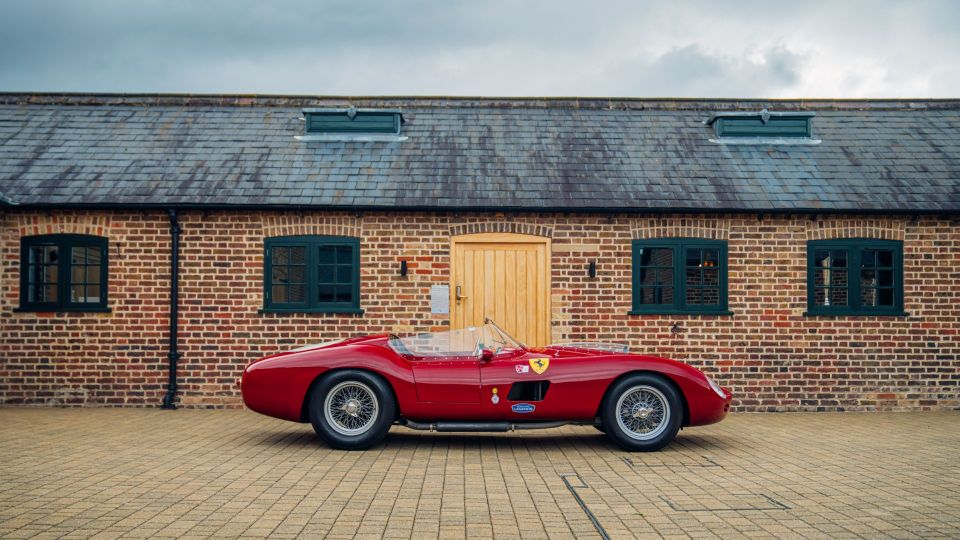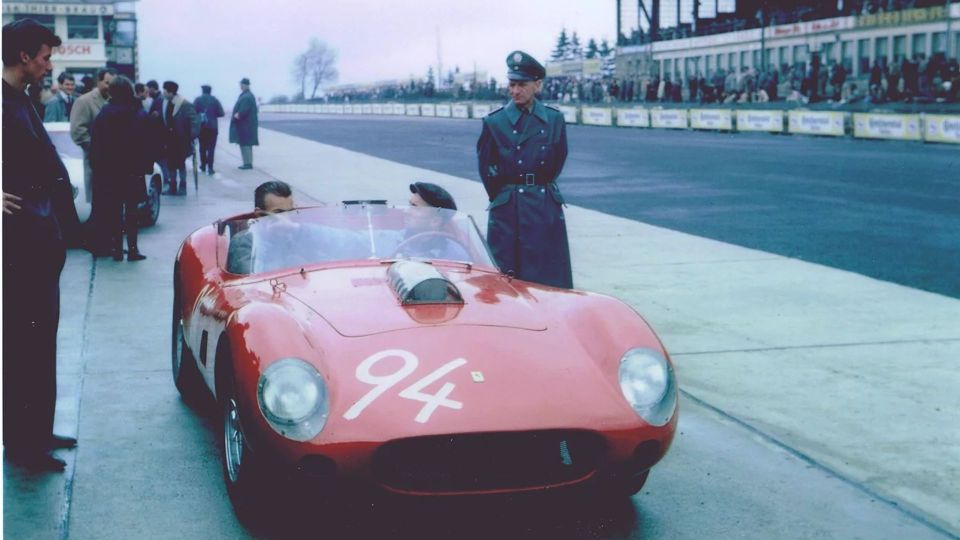Cegga Ferrari 250 TR review: one-off classic race car driven

This stunning Cegga Ferrari 250 TR recreation is your ticket to racing at Goodwood Revival. Tim Pitt gets behind the wheel.
It was the moment from Goodwood Revival 2023 that nobody will forget. Exiting a long right-hander onto the Lavant Straight, the 250 GTO suddenly locked its rear wheels and exploded into flames. Its driver, ex-Formula 1 ace Karun Chandhok, walked away unscathed, but the Ferrari wasn’t so lucky.
Except… contrary to what you will read elsewhere, this wasn’t a 250 GTO. Genuine examples of this Ferrari icon – and there are only 36 of them – have simply become too valuable to be used in anger. So, like several cars other on the same starting grid, this was an exacting recreation, built to look, sound and drive like the real thing.
The ‘Cegga’ Ferrari pictured here was also at Goodwood that day, competing in the Sussex Trophy against Jaguar D-Types, a Maserati 300S, a Lister ‘Knobbly’ and more. It too is a recreation, but one based on a unique Ferrari with a fascinating backstory. Now up for sale via DK Engineering and online car auction platform Carhuna, it could be your ticket to racing at Revival.
A reborn racing car

Cegga was founded in 1959 by brothers Claude and Georges Gachnang, who lived in the small Swiss town of Aigle (the name is an acronym of Claude Et Georges Gachnang Aigle). Motorsport had been banned in Switzerland after the horrific crash at Le Mans four years earlier, but the Gachnang siblings were prepared to travel abroad and determined to race. They bought the remains of a crashed Ferrari 250 Testa Rossa and set to work.
Claude (the mechanic of the duo) rebuilt the ex-Scuderia Askolin racer using independent rear suspension of his own design instead of a solid axle. He also fitted inboard disc brakes and an ENV differential. Cegga then commissioned Italian coachbuilder Scaglietti to wrap the tubular steel chassis in a bespoke aluminium body that dispensed with the ‘pontoon’ wings of the Ferrari original.
With Georges at the wheel, the Cegga won no less than five hillclimb events in 1961, then finished 12th at the Four Hours of Pescara in Italy: the last round of the Sports Car Manufacturers’ Championship. A 17th place at the Nürburgring 1,000 Kilometres followed in 1962, before an accident in a Cegga single-seater led Georges to retire from racing. The Ferrari was then sold to a collector who returned it to original 1958 250 Testa Rossa specification.
Brotherly love

Scuderia Cegga could have remained a footnote in motorsport history, but David Cooke had other ideas. The ex-England rugby player and historic racing driver got in touch with Claude and Georges, now both aged in their 80s, and suggested recreating the Cegga Ferrari from scratch. The brothers still had many of the original technical drawings and were happy to help.
Using the chassis from a 1958 Ferrari 250 GT Boano and an authentic ‘Colombo’ V12 engine, along with careful study of period photos and input from the Garchnangs, a tool room copy gradually took shape. After four years of meticulous work, the Cegga made its public debut at Goodwood Revival in 2019, with an emotional Georges watching the action.
David Cooke is now ready for a new project, so his car is up for sale. However, before the Carhuna listing went live, I was allowed a blast behind the wheel – driving on country lanes near DK Engineering’s base in Hertfordshire. Even without the pressure of battling 27 other classic cars to the chequered flag, it was intense and memorable.
Sound and the fury

In fact, I can almost still hear it. Inhaling through 12 proudly displayed intake trumpets, then exhaling via two unsilenced side pipes, the 3.0-litre V12 is preposterously, almost painfully loud. Its animalistic roar as the revs soar towards the 8,000rpm redline is also totally addictive, an overwhelming rush of sound and fury.
I struggled to get comfortable in the fixed seat, eventually resorting to a cushion wedged behind my back, yet in other respects the Ferrari proves very straightforward to drive. Its slow-paced steering feels light and the manual ’box is mounted up at chest height, making it easy to muscle the spindly lever across the open gate. With only four ratios and plenty of torque, second gear is fine for most rural roads.
Its ride is rather abrupt, but the Cegga’s independent rear suspension delivers a deftness and cornering poise that a similar car with a live axle would surely lack. Pretty soon, I have almost forgotten its one-off status and am simply enjoying the drive, the chilled winter air skimming the aero screen as the V12 thunder shakes the last remaining leaves from the trees.
Ready to race again

Still, this isn’t really a road car. I’m hoping the next time I see the Cegga (pictured above in period) will be at the Goodwood Members’ Meeting in April, where it’s eligible to race in the Salvadori Cup for World Championship sports cars that competed from 1955 to 1960. For one lucky driver, what an experience that will be.
Tim Pitt writes for Motoring Research